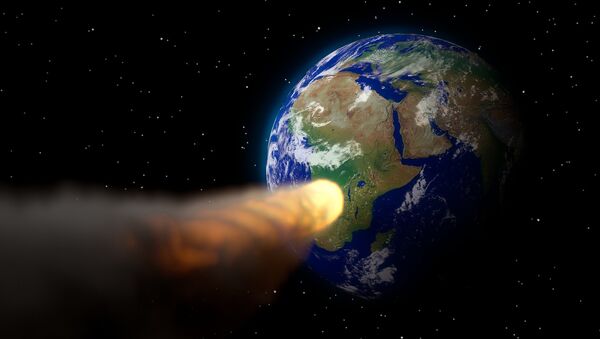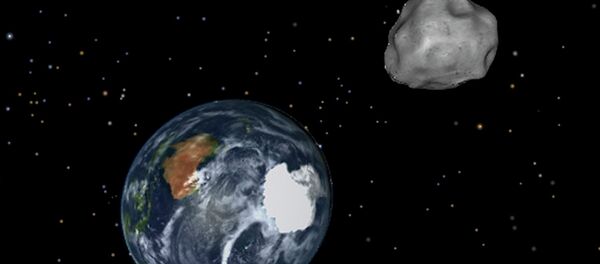Before everybody seeks refuge underneath their beds, 3122 Florence, also known as Asteroid 1981 ET3, will actually zoom by Earth at a distance of 4.4 million miles — approximately 18 times the distance between the Earth and the moon.
Nevertheless space experts stress none have been seen this close to Earth since 1890 — although the good news is our planet will have to wait until 2500 before it experiences an equally intimate encounter.
Details on how you can spot #asteroid 3122 Florence — It's a biggy! — on 1 Sep https://t.co/bsEIJURlWm #NEO pic.twitter.com/DnmdR9pQ06
— ESA Operations (@esaoperations) August 22, 2017
Paul Chodas, manager of NASA's Center for Near-Earth Object Studies, said: "While many known asteroids have passed by closer to Earth than Florence will on September 1, all of those were estimated to be smaller.
"Florence is the largest asteroid to pass by our planet this close since the NASA program to detect and tract near-Earth asteroids began."
Thankfully, for the sake of humanity, on this occasion, it will come and disappear without incident.
How does @NASA detect near-Earth asteroids and determine whether their orbits come close to Earth? Take a minute to learn. pic.twitter.com/JM2Dvz4Ruc
— Asteroid Watch (@AsteroidWatch) 13 July 2017
Discovered in 1981
First discovered more than 36 years ago by astronomer Schelte Bus, from the Siding Spring Observatory in Australia, space aficionados have been watching and tracking its movements ever since — not least because of its massive size, some 4.8 kilometers wide.
Asteroid 3122 #Florence by Michael Jäger on Aug 29, 2017 from Austria https://t.co/lfqBcoZNek [it will fly by Earth at ~18 lunar distances] pic.twitter.com/Me9SdrMJNn
— Massimo (@Rainmaker1973) 31 August 2017
Florence has an orbital period of about 2.4 years with its distance from the sun, ranging from 1 to 2.5 astronomical units.
Scientists will be able to track its approach towards us from September 1 using radar systems strategically positioned around the world.
Weather permitting, amateur astronomers should also be able to get a peek at the giant asteroid, which will have an apparent magnitude of 8.5 and move through the constellations Pisces Austrinus, Capricorn, Aquarius and Delphinus.
Were an asteroid of this size hit the planet, it would have worldwide effects, according to experts.
They have calculated already that any rock wider than 0.9 kilometers could effectively extinguish life as we know it.
Does It Pose a Threat?
Encouragingly, on its asteroid defense system website, NASA stresses:
"NASA is keeping a celestial lookout, and planning for any possible asteroids."
Indeed. this will not be the first space rock to pass close to us this year, a 10-foot (3-meter) wide asteroid, known as 2017 EA passed by at an altitude of just 9,000 miles (14,500 kilometers), well within the band of geostationary satellites that operate at 22,300 miles. It was detected just six hours before its closest approach.
NASA officials remain optimistic the planet is not on a collision course with any sizeable chunks of space rocks in the immediate future.
They add, however, humanity can't quite rest easy just yet, because there are several other apocalypse risks looming on the horizon.
Indeed one scientist fears we have just 20 years to avert a mass extinction which could lead to the demise of our species, while another expert believes there's a big chance we'll kill ourselves off by the end of the year.
Before anyone asks, the gentleman involved was not either US President Donald Trump or North Korean leader Kim Jong-un!


